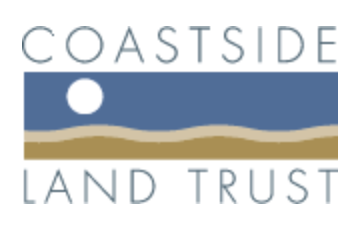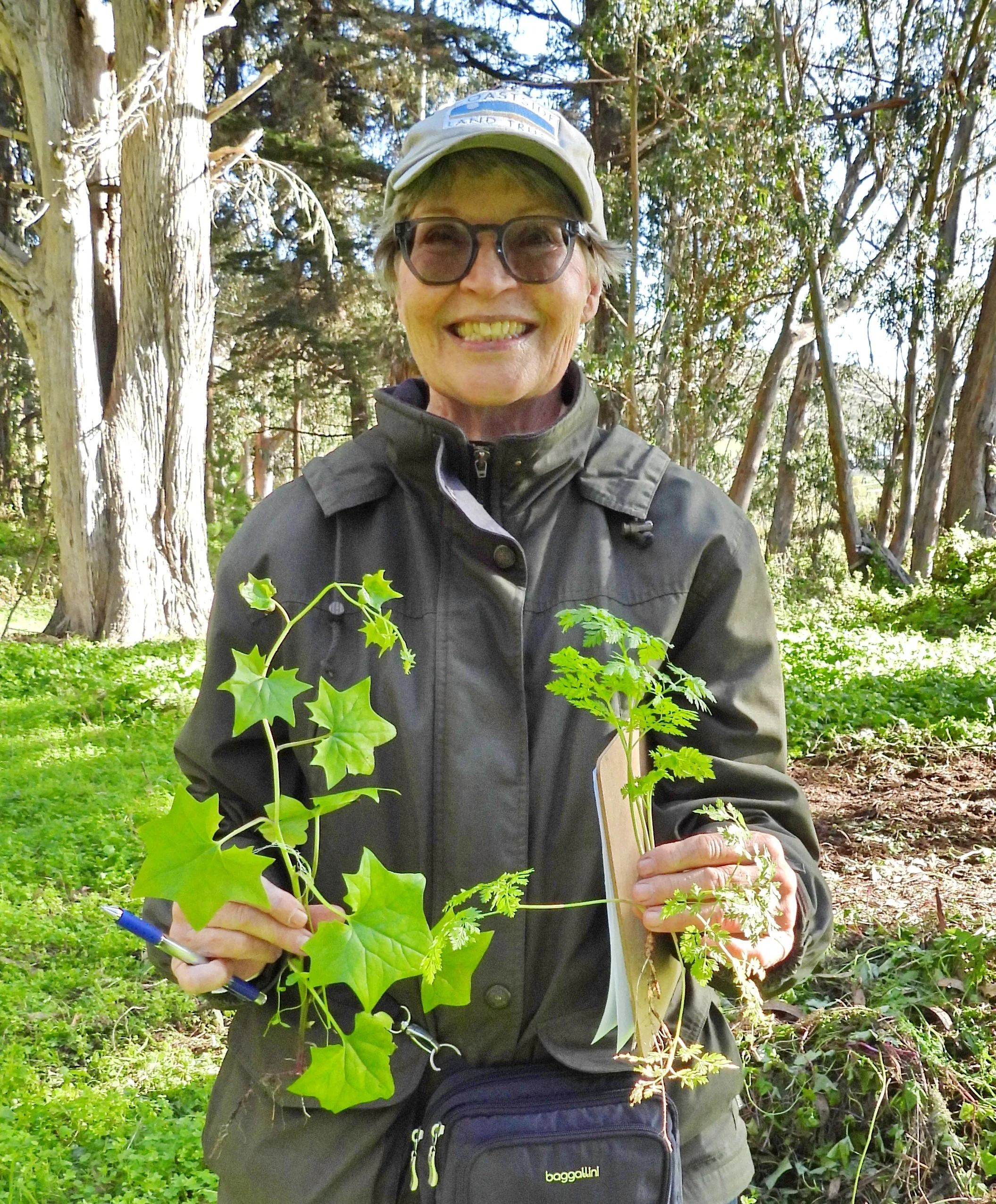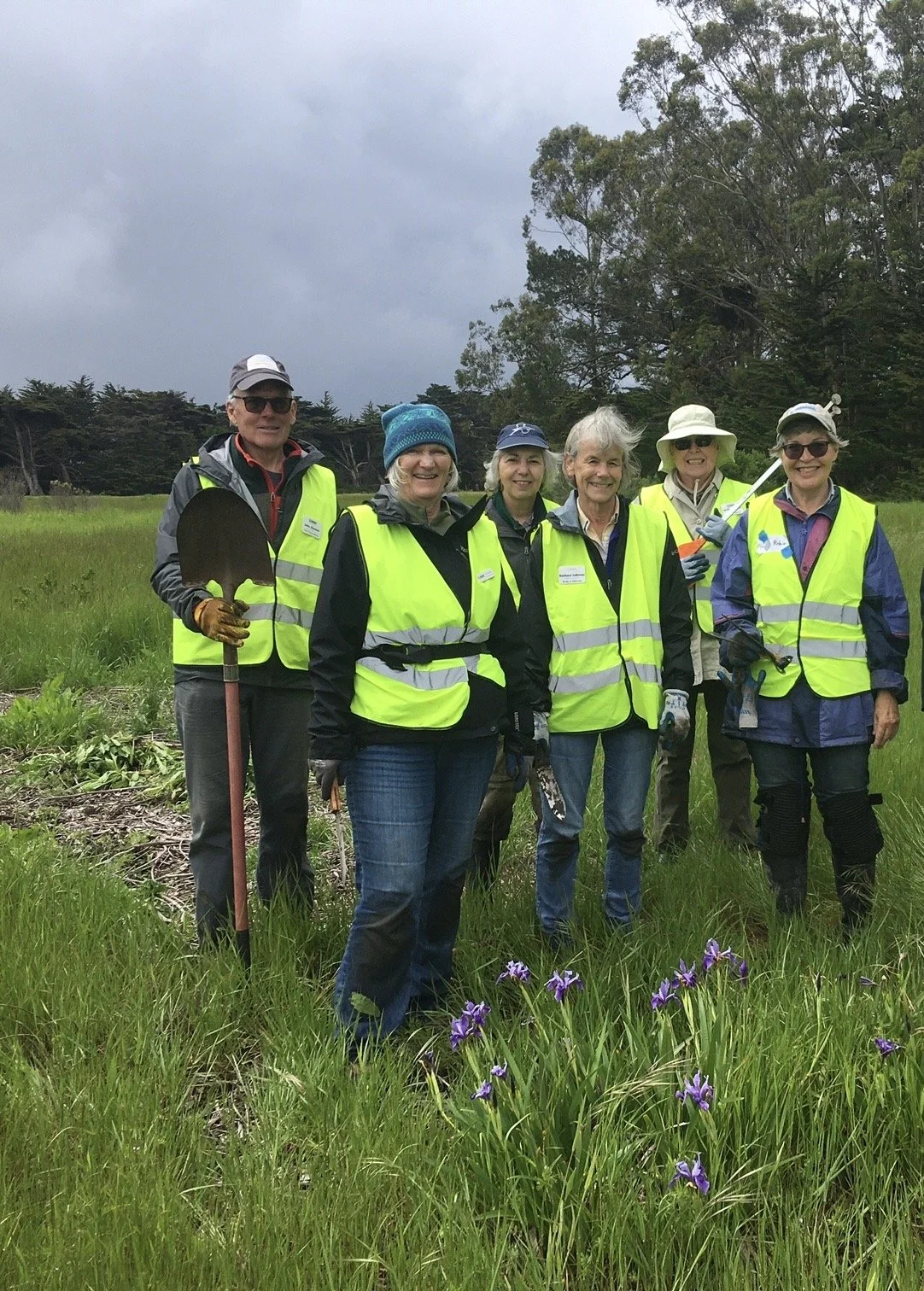Photo by Barbara Dye
Along the wild and windswept edge of Half Moon Bay, where the land opens wide into coastal prairie and sea, lives a woman whose life’s work has been to spark connection—between students and nature, knowledge and wonder, the present and the future.
Robin Arkell, a recently retired fourth-grade teacher from the Cabrillo Unified School District, spent years guiding young minds not just through multiplication tables and essay writing, but into the wild beauty of the coastal lands they call home. As an enthusiastic participant in Coastside Land Trust’s Junior Land Stewards Program, Robin brought dozens of students into protected open spaces and, in doing so, helped them root themselves more deeply in the land.
Photo by Barbara Dye
“My grandmother used to say, ‘The best way to make money is hang on to what you already have.’ We so often hear of flourishing ecosystems that are whittled away to nothing. Once gone, it is very difficult to reinstate the natural world,” Robin reflects. “Here on the coast, we are so lucky to still have uniquely beautiful spaces where native flora and fauna have lived in balance for thousands of years, and where everyone can visit and enjoy the sky, the sea, and the land.”
Robin speaks with reverence and urgency about the importance of preserving these lands—not just for their ecological value, but for their power to shape lives. In the classroom, she often saw students come alive in unexpected ways once they stepped onto the land.
“The program helps students get in touch with senses not often used in the classroom—like sound and touch—while also supporting academic skills like journaling, making graphs, note-taking, and analyzing,” she explains. “Over the months, they shift from simply answering questions to developing deeper, more moral understanding. They stop, they watch, they listen. They track birds, spot soil critters, or just stand quietly with their mouths open. You can actually see the moment they connect.”
These moments of connection—whether through scavenger hunts, field journaling, or muddy explorations—build something lasting. Her students, she says, “glory in getting dirty,” developing pride in the plants they grow, and a sense of ownership over the land itself. “They, as well as their plants, put down roots. The Coastside belongs to them.”
Even beyond the classroom, Robin knows firsthand the healing presence of these spaces. That familiar feeling—rounding the last bend on Highway 92 and catching the first flash of ocean—is as powerful to her as it is to longtime locals and first-time visitors alike.
“Your shoulders relax, your breath slows, and beauty strikes you—the raptors on the wires, the color of the fields, the quiet rhythm of the sea. Just like my students, adults who walk the Coastal Trail connect with nature at a gut level. Watching seals, spotting hummingbirds, seeing native plants in bloom—it becomes inexpressibly dear to you. You understand why it must be preserved.”
Photo Credit: Andrea Laue
As she looks toward the future, Robin’s hope is that we don’t take these coastal treasures for granted. That we “hang on to what we already have,” so generations to come can continue to learn from and fall in love with the land.
Since her retirement, Robin has joined the Coastside Land Trust Stewardship Committee and dedicates many hours to caring for our shared open spaces. She continues to expand her legacy in the care and protection of nature here on the coast. A true voice of the coast, her presence and impact echoes through the wide-open spaces of our coastside.
Please donate to help preserve and protect our coastal open spaces










